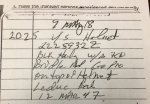Would have to wait for the court resolution, but at first blush, this type of offence "should not" affect insurance as it is an "equipment" infraction similar to an infraction for a blown headlight.
It seems most of these charges are coming out of the Kawartha Lakes OPP detachment, (Lindsay, Fenelon Falls, Bobcaygeon). So it could be the detachment commander has an issue with helmet mounted cameras. This is a ticket which "appears" pretty easy to avoid. Mount your camera on your bike, buy a GoPro chest strap, or don't ride in the catchment area of that particular detachment.
I used to use a helmet mounted camera, I rode that area extensively, back then and never had an issue. Once this became an "issue", (and the helmet was due to be replaced I mounted the camera on my bike, (and added a second rear facing one, which saved my butt with insurer, when I was side swiped by a road rager). I found the footage MUCH better quality and easier to watch once the camera was in one place with a stable view, (I ALWAYS knew where the view of the camera was, and never had to be concerned about "catching" my speedometer in the footage).
This case, should, barring an adjournment, be resolved tomorrow morning. Then the OP can decide, (should he lose), decide if his pockets are deep enough, to hire a lawyer and begin the appeal process). If the OP loses, my personal recommendation would to NOT wear a helmet mounted camera ANYWHERE near Lindsay and surrounding areas. Doesn't matter if we agree with the reg, or it's enforcement, not worth the hassle.
Agreed! There are better ways to conduct themselves and fine people.
Unfortunately, there is no clarity for the OP to have a resolution that doesn’t affect their record, pocket book and possibly insurance.
Sent from my iPad using Tapatalk

















